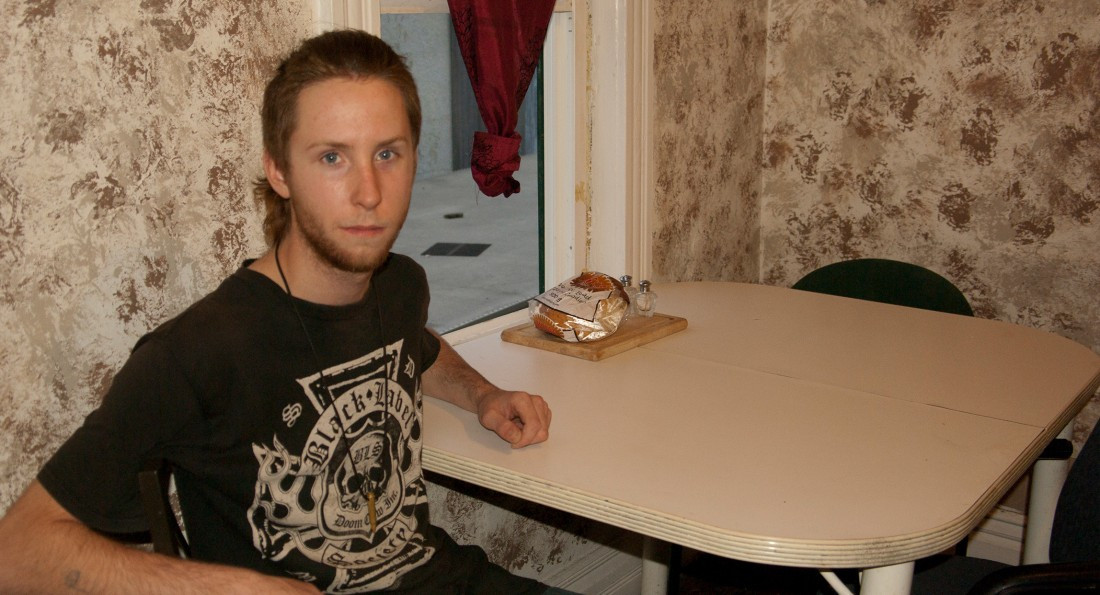Russian roulette in Winnipeg’s drug scene
Steps you can take to avoid fentanyl
Winnipeggers who use drugs or know anyone who does have cause for concern.
Fentanyl is a relatively new drug in Winnipeg and is already one of the most dangerous drugs on the street. The opioid has been found by police and paramedics throughout Winnipeg in powder and pill form and on LSD-like paper blotter tabs.
This means opioid users aren’t the only ones in danger – those illegally purchasing acid, MDMA, ecstasy, meth and cocaine are also at risk.
Put into perspective, morphine is 10 times more potent than heroin. Fentanyl is 100 times stronger than morphine. Likewise, carfentanil, a form of fentanyl meant for sedating large animals like elephants, is 100 times stronger than fentanyl and has also been found on Winnipeg’s streets.
When someone consumes an opioid, such as fentanyl, the drug binds to opioid receptor sites in the brain. These receptor sites are also responsible for triggering respiration. When a person’s carbon dioxide and oxygen levels are unbalanced, these receptors tell the brain to breathe.
When too many opioids bind to these sites, the brain can’t communicate that it needs oxygen, which is why opioid overdoses are so dangerous. They can easily lead to brain damage or death.
Alex Georgeson knows all too well the dangers of fentanyl. In 2015, Georgeson accidently overdosed on fentanyl when the drug dealer who sold it to him lied about what it was.
“I woke up on life support. It was one of the worst experiences of my life,” Georgeson says.
Georgeson warns of fentanyl ‘hotspots.’ About two grains of pure fentanyl can cause an overdose. Dealers who are aware of its potency will often cut it with another substance.
Unfortunately, dealers don’t always cut the drug evenly, so sometimes a hotspot can occur where fentanyl is more highly concentrated in one specific area.
“It’s like Russian roulette,” Georgeson says. “Even if you test it out before and are smart about it, (you can still overdose). That’s the scary part about it.”
Between Jan. 1, 2015 and Nov. 15, 2015, the Winnipeg Fire Paramedic Service and Winnipeg Police Service (WPS) responded to 96 cases involving fentanyl.
Shelley Marshall, a clinical nurse specialist at the Winnipeg Regional Health Authority (WRHA), believes the pervasiveness of fentanyl in Winnipeg is much higher than these 2015 numbers would suggest, based on the anecdotal evidence of people she encounters every day.
“We don’t even know how big it is, but I think it’s way bigger than we’re hearing,” Marshall says. “People come in here and say ‘aww man, so many of my friends...’ I think a lot of stuff is not hitting the news … it’s just that nobody has actually calculated the scope.”

Overdose kits containing naloxone are available from Street Connections.
Marshall helps run Street Connections, a harm-reduction program that provides free naloxone kits to those who are most likely to use and need them. Naloxone is a drug that reverses opioid overdoses. It works because it has a higher affinity for the same receptor sites as opioids and so it replaces the opioids, allowing breathing to resume.
Since Jan. 1, 2016, Street Connections has provided 133 kits, and 11 of them have been reported to reverse an overdose. Nearly half of these overdoses involved fentanyl (four fentanyl, one carfentanil). Of these 11 reversed overdoses, three affected people were between the ages of 19 and 31, and one was between the ages of 12 and 18.
Marshall says early warning signs of an opioid overdose could include pinpoint pupils, blue lips and fingernail beds, paleness, drowsiness, depressed breathing and unconsciousness.
In Georgeson’s case he took all the necessary precautions someone should take to use drugs safely, and yet that still wasn’t enough. Before taking the drug, Georgeson did a tester shot, where he smoked half of a hit. He also shared it with his friends, who seemed to be fine. After he saw that they were okay, he put about 0.03 of a gram into a needle and injected it.
In his daze, Georgeson wandered away from his friends. In nothing but a T-shirt, Georgeson passed out in an alleyway on a cold November night. Paramedics found him three hours later.
“At that point, I had developed hypothermia, and the fentanyl had shut down most [of] my organs … including my liver, lungs and heart,” Georgeson says. He believes it was most likely naloxone that saved his life.
Although Georgeson suffered permanent brain damage, he considers himself incredibly lucky. Since the overdose, Georgeson feels he has been scared straight and says he has been sober for a year. He plans to become a welder but is first working toward getting his GED.
Free naloxone kits can be picked up from Street Connections at 496 Hargrave St. between 8:30 a.m. and 4:30 p.m. Streetconnections.ca also has an interactive map that shows which pharmacies supply naloxone kits for purchase.
Shelley Marshall, a clinical nurse specialist at the Winnipeg Regional Health Authority (WRHA) suggests these tips for being safe when taking drugs:
•Most importantly, know your source;
•Get a free naloxone kit from Street Connections;
•If you’re with other people, don’t all use at the same time (have a spotter);
•Do not use alone;
•Do a tester shot (a smaller dose of the drug) first;
•If you’re at a festival, know where your first responders are.
Published in Volume 71, Number 9 of The Uniter (November 3, 2016)







